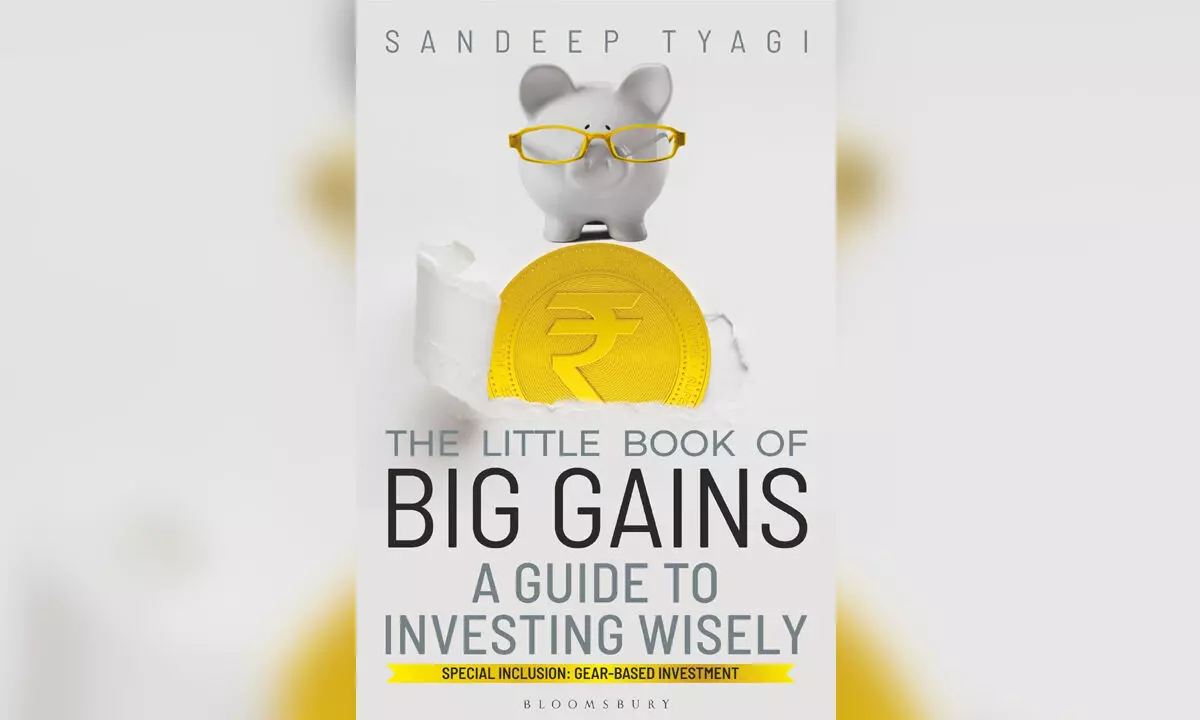
Speaking to The Hans India , Sandeep Tyagi - Chairman & CEO at Estee Advisors ,delves into the transformative impact of technology on modern investing, ashighlighted in their latest book, " The Little Book of Big Gains ". The book underscores how technologyfacilitates key investment processes such as performance tracking, taxoptimization, and portfolio rebalancing. It also simplifies complex conceptslike quantitative investing and algorithmic trading, making them accessible toreaders.
By integrating technology, investors can analyse extensive data, adaptto market shifts, and uncover growth opportunities with precision. The authoremphasizes that technology empowers investors to maintain emotional discipline,react to volatile markets, and optimize strategies in a constantly changingfinancial landscape. Sandeep Tyagi - Chairman & CEO at Estee Advisors Author ofThe Little Book of Big Gains What does the book "The Little Book of Big Gains" say about using technology for performance tracking, tax optimization, and rebalancing? The book emphasizes the significant role technology plays inmodern investing, particularly in areas like performance tracking, taxoptimization, and portfolio rebalancing.
By leveraging technology, investorscan gain real-time insights into their portfolio's performance, allowing formore informed decision-making. This is crucial for staying on track with yourinvestment goals and making necessary adjustments. For tax optimization, technology can help implement strategieslike tax-loss harvesting, which minimizes the impact of taxes on your returns.
This involves using software to identify opportunities to sell underperforminginvestments at a loss to offset gains elsewhere in your portfolio. When it comes to rebalancing, technology simplifies theprocess by providing tools that automatically adjust your portfolio to maintainyour desired asset allocation. This ensures that your investment strategyremains aligned with your risk tolerance and financial goals, even as marketconditions change.
Overall, the book highlights how integrating technology intoyour investment approach can streamline these processes, making it easier tomanage your portfolio effectively. What role does technology play in helping investorsquickly respond to market shifts or new data points? We review data on a daily basis. This would be impossiblewithout the use of technology.
All the data is processed to rebalance the portfolioevery day. How does the book break down the fundamentals of quantinvesting for readers who may not have a background in finance? The book covers the fundamentals of Quant investing fromsystematic asset allocation to understanding how different "factors"are created and combined. It also talks about the importance of portfolioconstruction.
It also describes the process of optimizing for risk in additionto return. It describes how quant investors set a benchmark and measuretracking error, which measures how much we deviate from thebenchmark. How does algorithmic trading differ from traditionalinvestment methods in performance, especially during volatile markets? Algorithmic systems have a big advantage in that they neitherget greedy nor scared.
This is a particularly useful attribute in volatilemarkets. Volatile markets are difficult to handle emotionally. Most investorspanic or get overconfident and make errors.
Algorithmic trading does not makethese errors. Also, algorithmic trading can react to the markets quickly and without a break. It can maintain the same system throughout the day, day afterday.
How does the book suggest leveraging data-driven insightsto identify growth opportunities in these emerging sectors? The book describes a method by which we use hundreds of factors, including growth and momentum factors. We also have separate factors forevaluating the performance of each sector. Combining these factors, we can identify opportunities in each of the sectors.
Over the model's life,nearly 2/3 of the excess performance has come from our skill in identifying theright stocks, and about 1/3 can be explained by making bets on the right sectoror high-level factors like momentum or market cap. What tools or techniques does the book recommend forstaying adaptable in a constantly changing financial landscape? The principles of investment are timeless and don’t changeday to day. The market data, pricing, market demand and supply keep changingevery minute.
The quant method calls for using constant principles to analysethe ever-changing information. This yields consistent and predictableperformance. What examples of factors or data points can technology analyse to identify potential investment opportunities? The main factors are momentum, growth of revenue andearnings, value, market cap size, volatility, and business leverage.
In addition,we have hundreds of other factors ranging from fundamental, technical, indexparticipation, investor participation, macroeconomic and sector-specificfactors. Actually, academic research has generated thousands of factors, which we have tested to identify the few hundred that we find potentially useful..














